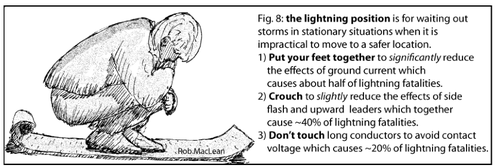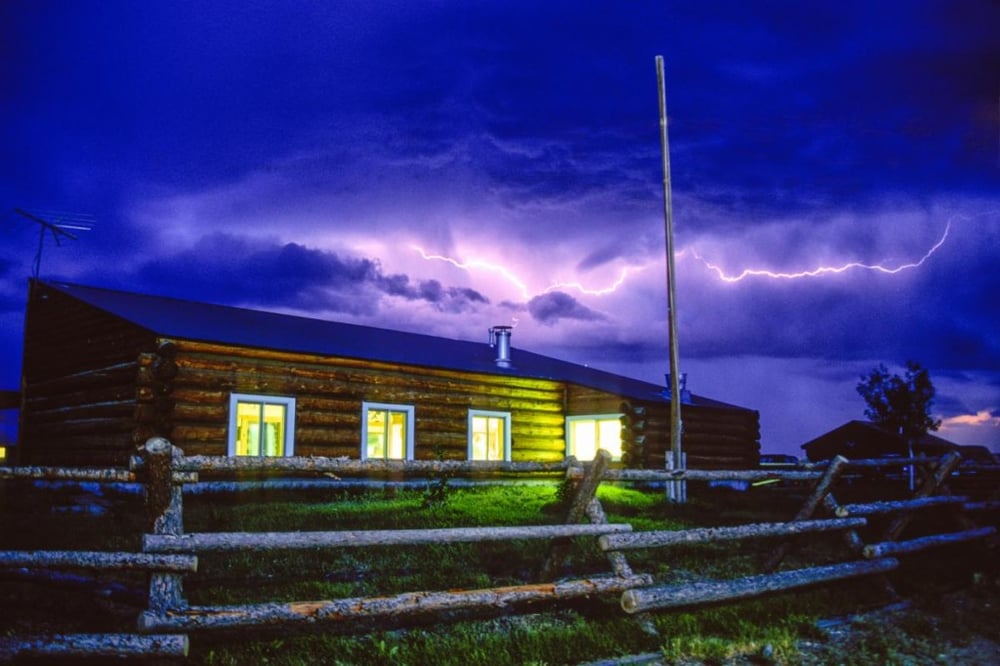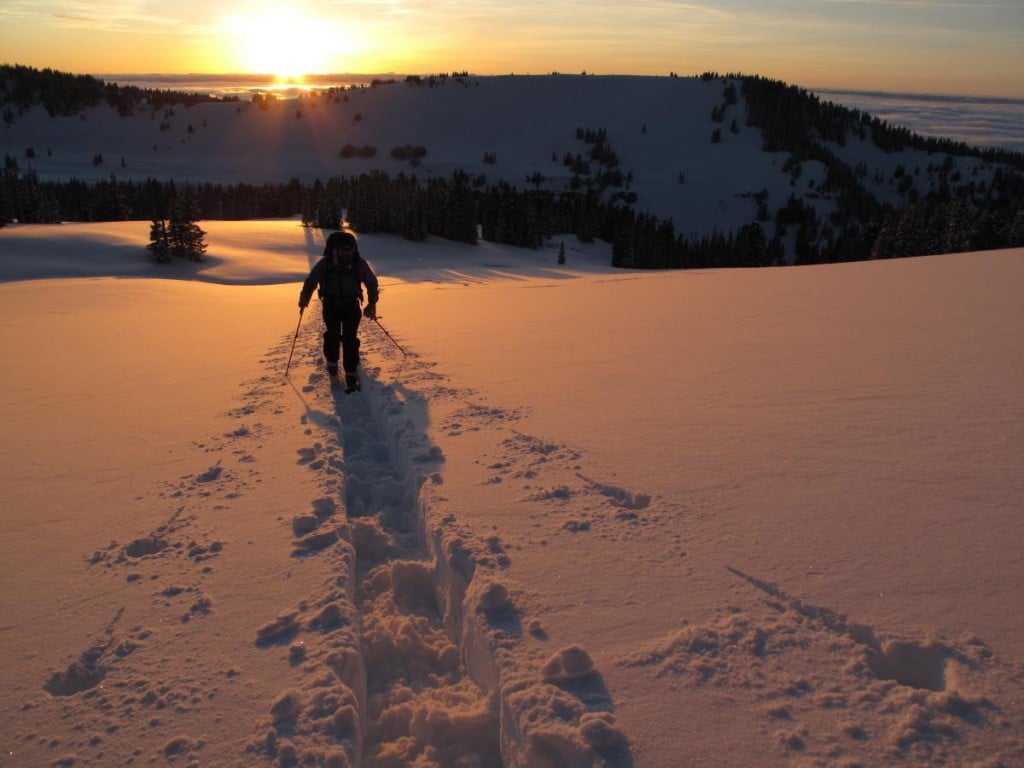I spent last week in the Wind River Range with my daughter and two of my sons. One afternoon at 10,000’ we had a tremendous thunderstorm. Thor’s bolts and simultaneous flash bangs danced and lanced off the high peaks.
We saw the storm build and had the tent up before the first large raindrops turned to hail and graupel (softer hail). Mark and Emily were in the tent, on their sleeping pads, playing cards. Dave, as the dutiful NOLS instructor that he is, was huddled under whitebark pines making hot drinks. I was wandering around the stunted krumholtz trees with those mixed feelings of fear and wonder at the tremendous display of storm and lightning.
Dave was in a lightning position, but more by virtue of managing the stove than risk management. I wasn’t in a lightning position, neither were Mark and Emily. I wondered what people might think if I were struck by lightning. “What a dummy. He should have known better.” I was also mulling over the value of the vaunted lightning position and its many variations—heels together or apart, mouth open or closed, fingers in ears, on a pad, etc.
Is the lightning position just an illusion of safety?

The lightning position is hard for anyone to hold for long. Mary Ann Cooper, M.D., an acknowledged lightning expert, has written “Our best educated guess with science is that it’s acceptable to kneel or sit cross legged.” Old guys and weak-kneed people appreciate the permission to do what we have been doing for years.
Dr. Cooper also says “No action will achieve safety from lightning in the wilderness away from a substantial building or a metal-topped vehicle. None of the following are known to lower the risk: being inside a tent, sitting on a pad, removing metal objects from a person, or any configuration of the body.”
We had already done many things to reduce our risk. We chose not to go higher in the valley. We camped on a wide ridge in a uniform subalpine forest with granite domes 60-80’ above us and the soaring peaks of the East Fork Valley towering 3,400’ above. We were not on a peak or exposed ridge. We were away from water and drainages and we were not the tallest object in the middle of a flat field. Dave and I were spread apart, but could still see each other. I decided not to send Mark out into the storm to become wet and cold, plus he was a good distraction for his younger sister.
Would I ever use the lightning position? Absolutely.
If I was in an exposed place with no other options—why not? There is at least comfort in action. I’ve been caught in a wide forest and on a flat meadow where the only way to improve our lightning risk management was to space people apart and assume the position. But, I would not use the lightning position in place of seeking better terrain to wait out the storm.
While we seek absolutes to help us manage this risk, it seems as if we only have educated guesses, common sense, and a bit of science. As in many things, we must weigh the options and use our judgment.
Learn more about lightning risk management with NOLS' Mythcrushers video and take a wilderness medicine course.
Written By
Tod Schimelpfenig
As a NOLS Instructor since 1973 and a WEMT, volunteer EMT on ambulance and search and rescue squads since the 70s, Tod Schimelpfenig has extensive experience with wilderness risk management. He has used this valuable experience to conduct safety reviews as well as serve as the NOLS Risk Management Director for eight years, the NOLS Rocky Mountain Director for six years, and three years on the board of directors of the Wilderness Medical Society, where he received the WMS Warren Bowman Award for lifetime contribution to the field of wilderness medicine. Tod is the founder of the Wilderness Risk Manager’s Committee, has spoken at numerous conferences on pre-hospital and wilderness medicine, including the Australian National Conference on Risk Management in Outdoor Recreation, and has taught wilderness medicine around the world. He has written numerous articles on educational program, risk management and wilderness medicine topics, and currently reviews articles for the Journal of Wilderness and Environmental Medicine. Additionally, he is the author of NOLS Wilderness Medicine and co-author of Risk Management for Outdoor Leaders, as well as multiple articles regarding wilderness medicine. Tod is the retired curriculum director for NOLS Wilderness Medicine and is an active wilderness medicine instructor




